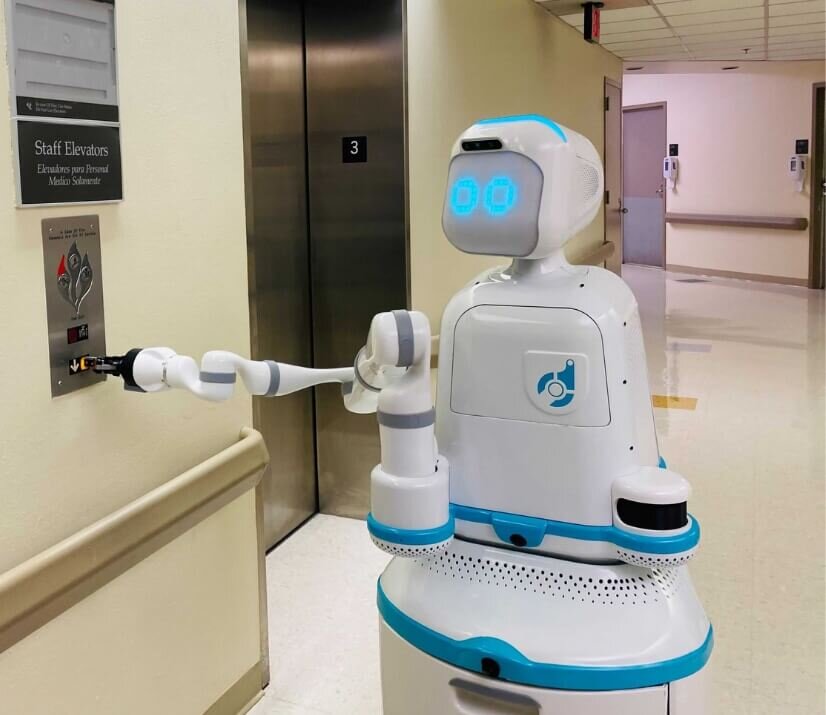A Look Into Healthcare Robotics Emerging Market
Healthcare robotics has emerged as one of the most promising areas of technological innovation, particularly as the world grapples with an aging population, rising healthcare costs, and increasing demand for precision in treatment. Robots are no longer confined to operating rooms; they’re assisting in rehabilitation, diagnostics, caregiving, and even patient monitoring.
Why Healthcare Robotics?
The healthcare sector faces a number of critical challenges: a growing global population, an increasing shortage of skilled workers, and rising operational costs. Robotics offers a solution to these pressing issues by enhancing precision, reducing human error, and alleviating the burdens on healthcare professionals.
The global healthcare robotics market is expected to grow to $11.4 billion by 2027, driven by advancements in artificial intelligence (AI) and robotic technologies. Startups are playing a crucial role in addressing gaps in patient care and operational efficiency. Vicarious Surgical, a Boston-based startup, has developed an innovative robotic-assisted surgery platform that offers precision and control in minimally invasive procedures.
“Robotics in healthcare is about more than just efficiency—it’s about improving outcomes for patients by allowing surgeons to operate with greater precision and fewer complications,” says Adam Sachs, CEO of Vicarious Surgical.

Vicarious Surgical Assistant
Who is Making Noise in the Industry?
Several pioneering startups are leading the healthcare robotics revolution. These companies are addressing various pain points in the healthcare ecosystem, from surgical assistance to patient care.
Vicarious Surgical: Based in Massachusetts, Vicarious Surgical uses virtual reality (VR) and robotics to revolutionize surgical procedures. By combining AI and robotics, their platform provides surgeons with a tool that enhances precision and reduces recovery time for patients.
Cyberdyne: A Japanese startup, Cyberdyne focuses on rehabilitation robotics with its “HAL” (Hybrid Assistive Limb) exoskeleton. HAL is designed to assist patients with mobility impairments in regaining function, particularly after spinal injuries. The device leverages biofeedback to enhance muscle movement during rehabilitation exercises. Yoshiyuki Sankai, the founder of Cyberdyne, notes, “Our goal is to create a future where robotics empowers patients to reclaim their independence.”
Activ Surgical: This Boston-based company has developed a robotic system that provides real-time intraoperative visualization and data-driven insights during surgery. Their technology enhances a surgeon’s capabilities by using AI to analyze data during procedures, reducing the margin of error. Todd Usen, former CEO of Activ Surgical, emphasizes, “We’re enabling surgeons to see what the human eye can’t—paving the way for more accurate, life-saving interventions.”
What is Coming Next?
The healthcare robotics industry is on the cusp of significant advancements, particularly in AI integration and enhanced autonomy. Startups are increasingly developing robots that can not only assist but also make real-time decisions based on vast amounts of data.
Diligent Robotics, known for its service robot “Moxi,” is working on expanding the capabilities of robots in hospital environments. Moxi’s ability to handle non-clinical tasks like fetching supplies and delivering medications has already proven invaluable in reducing the workload on hospital staff. “We envision a future where robots are part of the healthcare team, enhancing the human element of care rather than replacing it,” says Andrea Thomaz, co-founder of Diligent Robotics.

Moxi By Diligent Robotics
Looking ahead, the next wave of innovation will focus on combining AI with robotics to create systems capable of advanced diagnostics and patient monitoring. Precision Robotics, a London-based startup, is developing a robotic surgery platform that uses machine learning algorithms to assist in decision-making during operations. The platform aims to make surgery more accurate by providing real-time guidance based on historical data.
In the coming years, we can expect healthcare robots to become increasingly autonomous, especially in assisting healthcare workers during pandemics or other crisis situations. Robotics-as-a-service (RaaS) models will also become more prevalent, allowing hospitals and clinics to deploy advanced robotic systems without significant upfront costs.
Healthcare robotics is revolutionizing the medical field by providing more precise, efficient, and scalable solutions. As these technologies advance, they promise to alleviate the pressures faced by healthcare systems worldwide while improving patient outcomes.
—————————————–
If you are a builder, investor or researcher in the space and would like to have a chat – please reach out to me at amit.k@thelotuscapital.com
